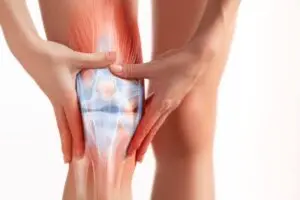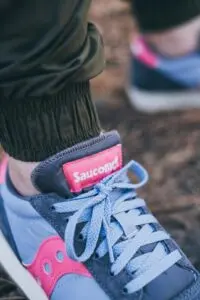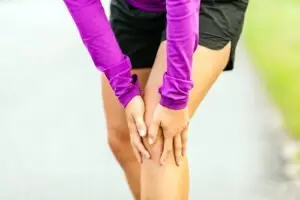Based In Science, Elevated by Service
Based In Science, Elevated by Service By Vessel Crew Vessel’s passion for improving the lives of others is anchored in an enthusiasm for science and its basis in wellness. Since our founding,…

By Vessel Crew

Patellar tendonitis, otherwise known as jumper’s knee, is an inflammation of the tendon that connects your kneecap (otherwise known as the patella) to your shin bone. This inflammation is usually brought on by overuse of your knee from activities like jumping or running. Patellar tendonitis is usually associated with pain with jumping or running, pain around your kneecap, or behind the lower part of your kneecap. You may also have swelling around the knee and pain with bending/straightening of your knee. Other symptoms can be present, as everyone is different. There are different grades of patellar tendonitis ranking the severity, with Grade 1 being the lowest and Grade 4 being the most severe. Grade 1 is mild patellar tendonitis, with pain present only during certain activities like running or jumping, and Grade 4 is severe patellar tendonitis, with pain being constant and severe. Only a healthcare provider can make an official diagnosis.
Running is not recommended when you first injure your patellar tendon. However, once pain has become mild or completely reduced, it is appropriate to begin a modified running regimen. If pain is noticeable when you run in shoes with a bigger ‘drop’, which is the height difference between the heel of the shoe and the forefoot, you can switch to a more minimal type shoe to help offload the knee. The minimal and barefoot style shoes remove the load from the knee and place more of the load to the foot and ankle. You can also slightly increase your running cadence, or steps you take in a minute, which can help reduce load from the knee. Also, improving your running form by running tall to prevent over striding and utilizing the piston cue technique can also be beneficial to preventing additional stress to the knee. It is best to keep in mind that if your pain level goes above 4 out of 10 and does not settle within 24 hours of exercise, it is best to stop running with patellar tendonitis.


Typically, conservative treatments are effective at fixing patellar tendonitis. This includes applying ice for 10-15 minutes several times a day to reduce swelling, resting your injured knee and temporarily stopping activities that cause pain, taking nonsteroidal anti-inflammatories (NSAIDs) as needed for pain, and incorporating stretching and strengthening exercises. You can also wear a brace to help support the knee while running with patellar tendonitis. If the pain continues, you can seek additional help from a physical therapist. They will be able to show you different stretches and strengthening exercises that will help strengthen the muscles around the kneecap, reducing the strain and improving pain. Once the pain has stopped, you can gradually begin running again but keep in mind to ease back into your exercise routine slowly as to not reinjure your tendon. If conservative treatments have failed and you continue to have pain, surgery or non-invasive High-energy Extracorporeal Shockwave Therapy may be required. With surgery, your knee is put in an immobilizer for 6 to 8 weeks and recovery time can take 6 to 12 months. With High-energy Extracorporeal Shockwave Therapy, there is no downtime after the procedure buy you must avoid high-impact activities for at least 30 days before easing back into those activities.
There are several exercises that can help stretch and strengthen the muscles and tendons around the patellar tendon. The four common stretches are the standing hamstring stretch, quadriceps stretch, side-lying leg lift and the rectus femoris stretch.

Before running with patellar tendonitis, it is recommended that you see your primary care physician if pain continues despite rest and self-care treatments. They can appropriately diagnose and provided alternate treatments and medications for your patellar tendonitis that would not be available to you otherwise. It is best to treat patellar tendonitis before it escalates and becomes too severe for conservative treatments.
Based In Science, Elevated by Service By Vessel Crew Vessel’s passion for improving the lives of others is anchored in an enthusiasm for science and its basis in wellness. Since our founding,…
NADH, NAD+, And NAD Benefits, Side Effects, Dosage And Stacking By Vessel Crew Let’s learn a little about this co-enzyme called NAD. It can be referred to as NADH, NAD+, NAD, vitamin…
©2024 Vessel Longevity + IV Bar ATX